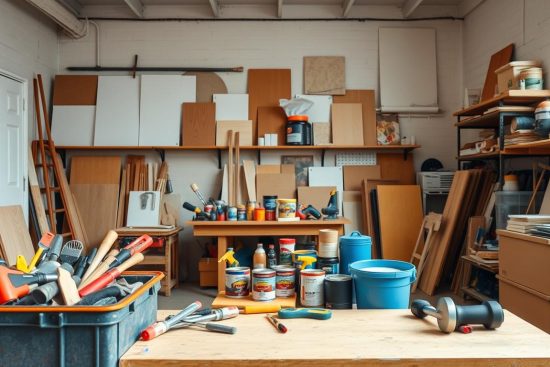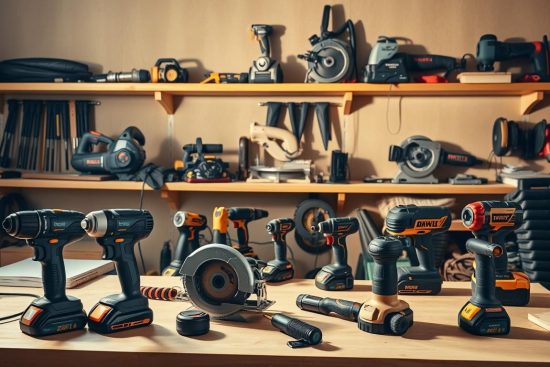Your kitchen is the heart of your home—and with smart planning, it can also become a hub for sustainability. Modern designs and appliances now let you balance performance with planet-friendly choices. By focusing on resource optimization and intelligent layouts, you’ll cut utility bills while reducing your environmental footprint.

Upgrading to high-performing systems doesn’t mean sacrificing style. Today’s energy efficiency innovations blend seamlessly into sleek cabinetry and countertops. From induction cooktops to smart refrigerators, these upgrades save money over time and simplify daily routines.
Thinking long-term? Start with an energy audit to identify waste areas. Simple fixes like sealing gaps or switching to LED lighting make a big difference. Pair these with durable materials and efficient appliances, and you’ll create a space that’s both functional and future-proof.
Key Takeaways
- Smart kitchen designs reduce energy use without compromising style.
- High-efficiency appliances lower utility costs and environmental impact.
- Resource optimization starts with practical upgrades like insulation audits.
- Durable materials and advanced technologies ensure long-term savings.
- Early integration of efficient systems simplifies maintenance down the road.
Introduction to an Energy-Efficient Kitchen
Transforming your kitchen into a sustainable space starts with understanding how everyday choices affect energy consumption. By focusing on smart resource use, you’ll reduce waste while keeping your home comfortable year-round.
What Does Energy Efficiency Mean Here?
In a kitchen, energy efficiency means using less power to cook, cool, and clean without sacrificing performance. For example, proper heating and cooling practices prevent heat loss from ovens or refrigerators. This lowers your home’s overall energy use and cuts utility bills.
“A well-designed kitchen can reduce energy waste by up to 30%, making sustainability both practical and affordable.”
Why Sustainable Design Pays Off
Smart layouts and appliances create ripple effects. Better air circulation prevents overheating, while efficient water heaters slash energy needs. Look at how small changes stack up:
| Practice | Traditional Approach | Efficient Alternative |
|---|---|---|
| Cooking | Leaving burners on high | Using induction stoves |
| Cooling | Overfilling the fridge | Organizing airflow |
| Cleaning | Long dishwasher cycles | Energy Star settings |
These tweaks lower heating costs and water energy demands. You’ll also enjoy consistent temperatures and fewer drafts. Over time, those savings add up—both for your wallet and the planet.
Selecting Energy-Efficient Kitchen Appliances
Choosing the right appliances isn’t just about brand names—it’s about finding tools that align with your home’s efficiency goals. Start by prioritizing certifications like ENERGY STAR, which guarantees top-tier performance while cutting cooling and power consumption.
Decoding ENERGY STAR and Key Features
ENERGY STAR-certified models use 10–50% less energy than standard options. For example, refrigerators with better insulation maintain temperatures without overworking compressors. This reduces costs and extends the appliance’s lifespan.
“ENERGY STAR appliances save households an average of $450 annually on utility bills.”
How to Compare Models Effectively
Look beyond price tags. Check annual energy use labels and compare:
| Appliance | Standard Model | High-Efficiency Model |
|---|---|---|
| Dishwasher | 300 kWh/year | 180 kWh/year |
| Refrigerator | 600 kWh/year | 400 kWh/year |
Pair these with windows that block heat gain or lighting that minimizes heat output. These choices create a cooler kitchen environment, lowering AC demands.
For larger projects, explore cost-effective upgrades like smart vents or convection ovens. Small adjustments today lead to lasting savings—and a home that feels effortlessly comfortable.
Integrating Energy Efficiency into Kitchen Design
Designing a kitchen that works smarter, not harder, begins with strategic layout choices. By blending modern tech with timeless upgrades, you’ll create a space that cuts energy consumption while keeping comfort front and center.
Optimizing Lighting, Windows, and Ventilation
Sunlight is your best ally. Large, well-insulated windows reduce the need for artificial lighting while blocking heat transfer. Pair them with sensor-activated LED bulbs that dim when natural light floods the room.

Proper ventilation matters more than you think. Range hoods with variable speeds remove excess heat without wasting power. Combine this with ENERGY STAR-rated exhaust fans to maintain fresh air flow. These tweaks prevent your AC from overworking, slashing home energy use.
Using Smart Controls for Heating and Cooling
Why manually adjust temps when tech can do it for you? Smart thermostats learn your schedule and adjust heating cooling systems automatically. Zoning systems let you cool only occupied areas, saving up to 20% on bills.
For example, pairing a smart water heater with efficient appliances creates ripple-effect energy savings. As noted in this guide to designing energy-efficient kitchens, layered upgrades deliver the biggest impact. Every smart choice adds up—for your wallet and the planet.
Practical Upgrades for Reduced Energy Consumption
Small changes in your kitchen can deliver big results for comfort and savings. Let’s explore budget-friendly ways to cut waste while keeping your space cozy.

Air Sealing, Insulation, and Ductwork Maintenance
Gaps around windows or pipes let hot water heat escape. Use weatherstripping or caulk to seal leaks. Proper attic insulation keeps kitchens cooler in summer—no need to overwork cooling systems.
Check duct joints for air leaks twice a year. Loose connections force HVAC systems to work 30% harder. Simple fixes like foil tape can reduce energy waste immediately.
Implementing Affordable Efficiency Upgrades
Swap old light bulbs for LEDs. They use 75% less power and last 25x longer. Pair them with smart power strips to eliminate phantom loads from gadgets.
| Upgrade | Cost | Annual Savings |
|---|---|---|
| Pipe insulation | $20 | $15 on hot water |
| Duct sealing | $50 | $90 on heating/cooling |
| LED bulbs | $30 | $75 on lighting |
Consider upgrading water heaters to tankless models. They heat water on demand, cutting standby losses. One Tennessee family slashed their bills by 18% through these efficiency upgrades.
Schedule an energy audit to find hidden waste spots. Many utilities offer free assessments. As highlighted in these practical energy-saving tips, combining small fixes creates lasting results.
“Sealing air leaks and insulating ducts helped me save $220 yearly—without replacing any appliances.”
Start with low-cost changes today. Each step brings you closer to a kitchen that’s kinder to your wallet and the planet.
Conclusion
Building a kitchen that saves energy and money is within reach with the right strategies. By combining efficient appliances with smart layouts, you create a space that cuts utility bills and supports sustainability. Every choice—from advanced lighting to intelligent heating systems—adds up over time.
Smart thermostats and well-sealed doors prevent wasted energy, while LED bulbs reduce power use without sacrificing brightness. Regular maintenance of ducts and systems ensures peak performance, protecting your investment for years.
Remember, even small steps matter. Adjusting your heater settings or upgrading insulation can make a noticeable difference. These practical measures keep your kitchen comfortable and eco-friendly.
Energy efficiency isn’t a one-time project—it’s a journey. Start with one upgrade, track your savings, and build from there. Your efforts today will reward you with a greener home and lasting financial benefits.


